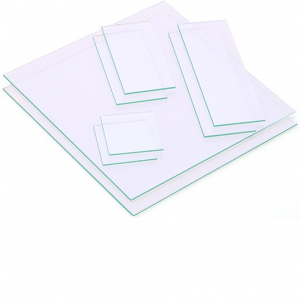| Electro Optic Sairan Industries Co. |

| Registration Date | 13 Jan 2021 |
| Revision Date | 13 Jan 2021 |
| Share |
Others Other products
ITO GlassHas a nanometer coating Resistant to fogging According to the tests, the glass has the desired resistance and when it is subjected to a heated flow, the heat distribution on its surface is in the allowable range. In addition, the amount of visible light permeability and the amount of light scattering of the product are acceptable and the performance of the thermistors embedded in it is also considered appropriate. Coating thickness (nm): 8-25 Visible light transmittance (%)(least acceptable value: 68.8): 86.5 Light scattering (HAZ) (Maximum acceptable value: 2.5): 0.17 Maximum temperature difference between two points on the surface (°C) (Maximum allowable value: 11): 7.2
The materials used in the design and construction of various parts of the aircraft, such as the fuselage, interior structure, and glass used in the pilot and passenger cabins, have certain properties. Due to the high altitude of the flight (about 35,000 feet) and the low pressure at this altitude compared to the ground, the structure of the aircraft must be designed and engineered to be able to provide the appropriate pressure for humans in the cabin during the flight. Hence, there is a difference between the air pressure inside and outside the aircraft, which can even lead to the disintegration of its components. As one of the most important parts of aircraft design, the glass must be made in such a way that by flying the aircraft at high altitude and being in temperatures even below zero, it can resist the pressure and does not crack or break.
The material of the side and front windows of the aircraft varies according to the amount of pressure they endure. Since the windshield or cockpit glass must withstand more pressure, the cockpit windows are made with 3 to 5 layers of glass, acrylic, carbon, plastic, and other materials. These glasses have a structure similar to laminated glass and do not break in the event of a collision with a foreign object (e.g. birds) and may leave only cracks. Another difference between windshields and side windows is the transparency and the neutralization of sunlight. The transparency of the cockpit glass should be such that the pilot can have adequate visibility when landing. Another important property of cockpit glass is that it does not create water vapor on its surface, as it reduces the pilot’s vision and can create danger. Nowadays, by applying some coatings with nanometer components, it is possible to help prevent the formation of a vapor layer on the surface of the cockpit glass. Such coatings do not have a detrimental effect on the amount of light passing or scattering through the windshield.